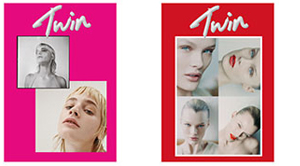It is not often that you arrive to an exhibition where the artist has not yet seen the final work, but such was the case for pioneering South African painter Esther Mahlangu, who made the very special trip from her home to Frieze London to see the fruits of her latest collaboration with BMW.
Mahlungu’s first project with the car manufacturer was in 1991 when she followed in the footsteps of male artists like Andy Warhol, Robert Rauschenberg and Roy Lichtenstein to create an Art Car for the brand, the first female and non-Western artist to take part this car came to define an important moment for female artists.
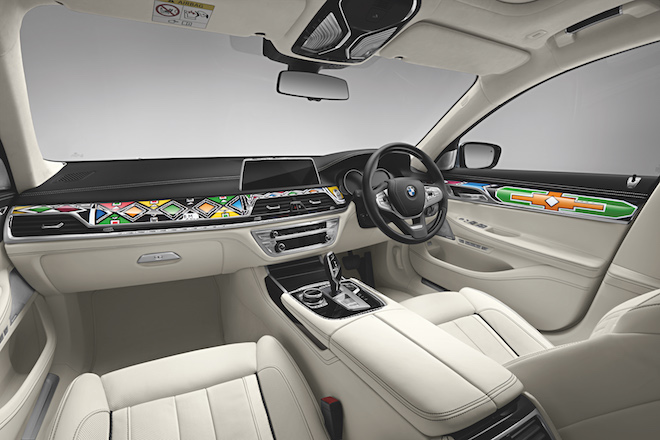
Credit: BMW
Twenty-five years later her signature traditional Ndebele paintings of bold primary hues and stark black lines have been used to transform the interior of a new 7 Series, and Mahlangu seemed more than impressed with the final result as the BMW team revealed the finished piece inside their Frieze lounge area in London.
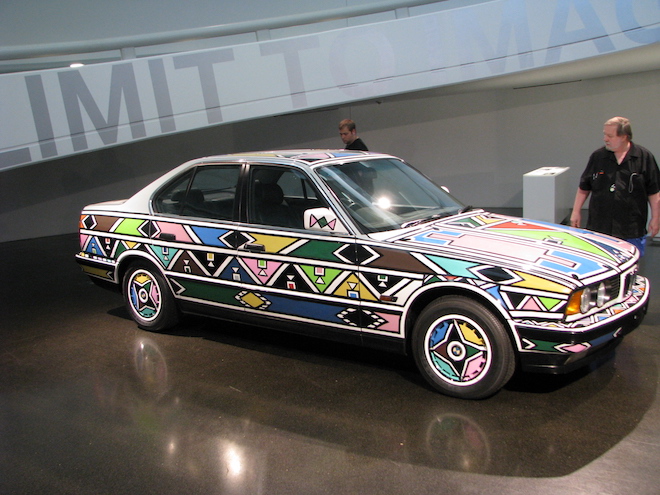
Credit: Strainu
Speaking to Twin about the differences between her large-scale creation in 1991 and the updated subtle approach she has taken in 2016, it was the size of the work that changed her approach. “In 1991 [the project] was huge, enormous as it was exterior.” Mahlangu said. “With the interior I had to be more subtle, to do the construction and think about the process. Usually when I create something, everything is in my head.”
“The biggest difference though is that 1991 was just an art object, where as this one is a useable functional object,” explained Mahlangu, as we watched the car go up for silent auction following its unveiling. With bidding beginning at £120,000, this collector’s item is the pinnacle in functional art, praising new technology whilst celebrating the traditional techniques in Esther’s work.

Credit: BMW
An emblem of serenity, Mahlangu’s presence at the bustling fair was more than humbling. Now aged 81 and adorned in a sea of beaded accessories, bright swathes of fabric and silver necklaces, she is as iconic as her work, upholding the traditions of South Ndebele people of Mpumalanga in South Africa through both her art and her clothing.
Beginning her artistic career aged ten, Mahlangu was taught the Ndebele painting techniques by her grandmother and mother, who used the same techniques to paint the walls of houses. Her methods have not altered since she was first taught, even for projects such as this.
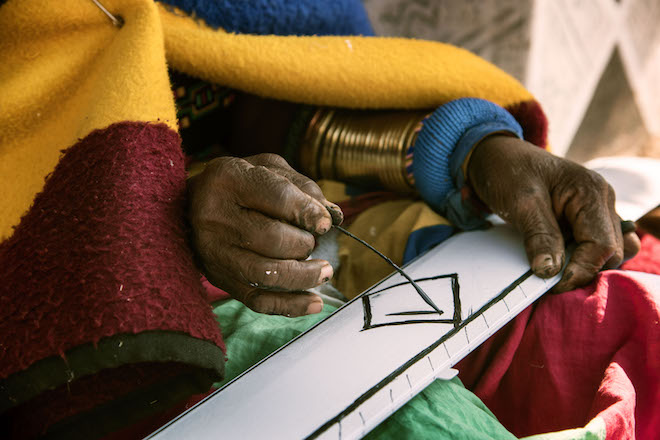
Credit: BMW
“I only work with chicken feathers,” she explained. “So in the [1991 project] I would bind at least five chicken feathers together to make a brush, whereas with this one I used a singular chicken feather to make the thin line, so you have to have much more control over the thin line than the thicker line.”
The traditions of painting were only carried out by women in South Africa, and have diminished since females have left to travel or take employment elsewhere. This has made Mahlangu’s work all the more important.
“As long as I am able to move I will paint because my fear is that the culture will die out and that is a reality,” she said. “I’ve been working with different brands like Belvedere and did the [Etys] shoes. When people ask why I prefer to work with all of the different brands, I say when they bring me something to do I can’t say no because when I die someday, somebody will own something of mine.”
The BMW Individual 7 Series by Esther Mahlangu is available to bid on now.
You can also see her 1991 design in the upcoming exhibition ‘South Africa: The Art Of A Nation’ at The British Museum which runs from 27 October 2016 – 26 February 2017


 PREVIOUS
PREVIOUS
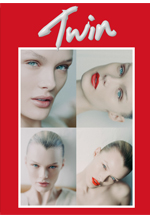
 Twitter
Twitter
 Tumblr
Tumblr
 YouTube
YouTube
 Facebook
Facebook
 Instagram
Instagram
